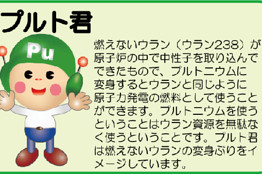The Wall Street Journal had a good article today with a sidebar on the Hunt for Plutonium I am quoting this in its entirety here because it disappears beyond the paywall after 24hours usually.
Hunt for Plutonium
Workers are still probing for the source of the plutonium found Monday at the Fukushima Daiichi nuclear plant.
Possible scenarios:
1. Some of the plutonium found is believed to have been there before the nuclear crisis started and is unconnected to the current situation. Tokyo Electric Power Co. says three of five samples are “equivalent to the fallout observed in Japan when the atmospheric nuclear test was conducted in the past.”
2. Heating of spent fuel rods
A likely source of the plutonium, experts say. As it decays, uranium in fuel rods produces some plutonium, which might have been borne aloft by steam in spent-fuel containment pools, or in water that splashed out as workers doused the spent fuel rods to keep them cool.
3. Partial melting of fuel in reactors 1 or 2
Decaying uranium in the fuel rods of reactors 1 and 2 would also produce plutonium. A partial melting in No. 2 is already considered the likely source of the strong radiation readings there and could also account for the plutonium. However, experts say that if partially burned fuel accounted for the plutonium found on the site, radioactivity levels would likely be much higher than they now are
4. Partial melting of fuel in reactor No. 3.
Reactor No. 3’s mixed-oxide, or MOX, fuel contains plutonium, and any breach in the reactor’s containment unit might account for a plutonium release. Government and company officials say they don’t have indications of such a breach, though, and experts say this is among the least likely scenarios.
My gut tells me that Scenario 2 and 4 are the most likely. I actually think that there is a breach in reactor 3 already, just not reported fully yet. There were some early reports which suggested it. The MOX fuel melt at a lower temperature, and may have damaged the cooling rods. Though the acknowledged breach in the containment at Reactor 2 could be a problem as well.
The radioactive water is also a pressing problem. The pumps to cool the plants are flooded by the radioactive water, and the water may be even more radioactive than reported because the plant’s equipment is once again inadequate to the task!
That water has flooded the turbine buildings of three of the complex’s six reactors and is filling trenches that lead outside the buildings—and stand, in one case, within a few inches of running over. At two of the reactor units, there is currently nowhere to relocate the water.
The plant’s cooling pumps, too, are located within these flooded zones. Workers will continue to face difficulties in their all-important goal of starting the pumps as long as the areas are flooded with radioactive water.
Of particular concern is the runoff at reactor No. 2, which has risen to within about three feet of spilling out of an outside shaft. Readings of radiation in this water are at least 1,000 millisieverts an hour—four times the level emergency work crews at the site are allowed to experience in a full year. Those levels may be higher still, but authorities say 1,000 millisieverts is the upper limit of their measuring devices. It isn’t clear why meters that are available to measure higher concentrations haven’t been used.

Leave a Reply